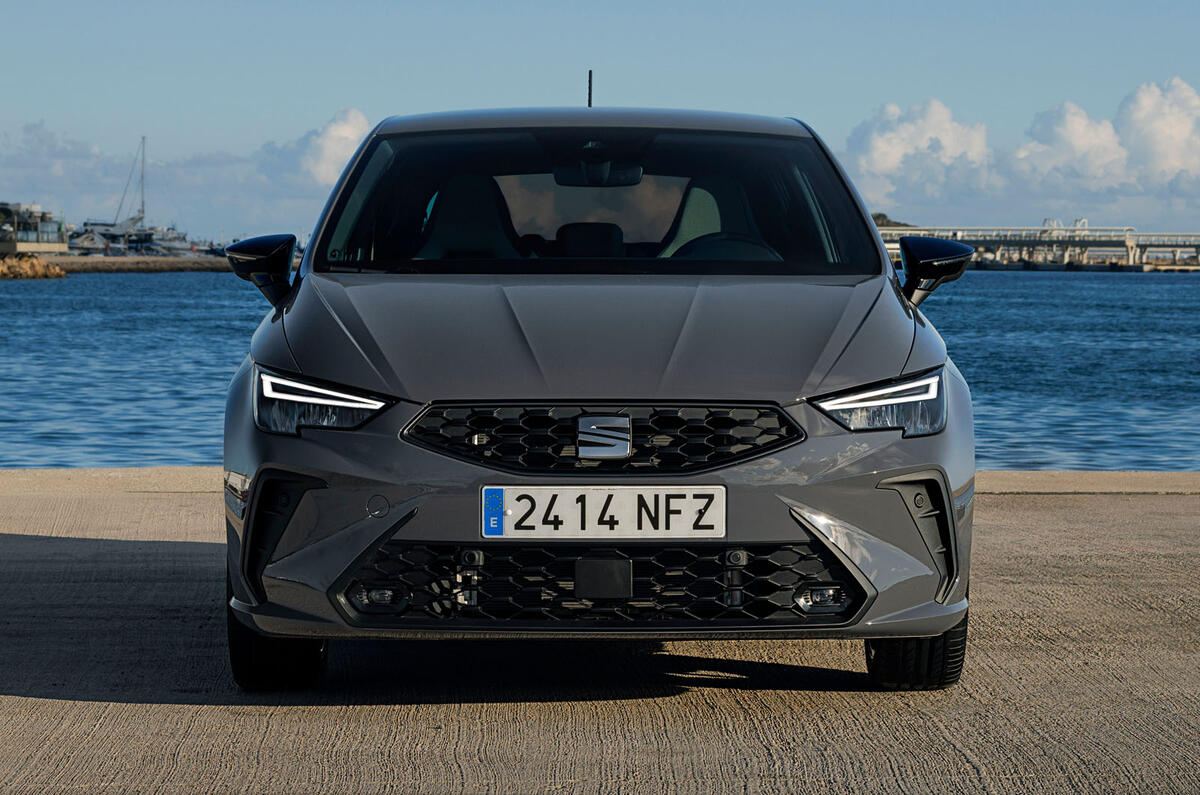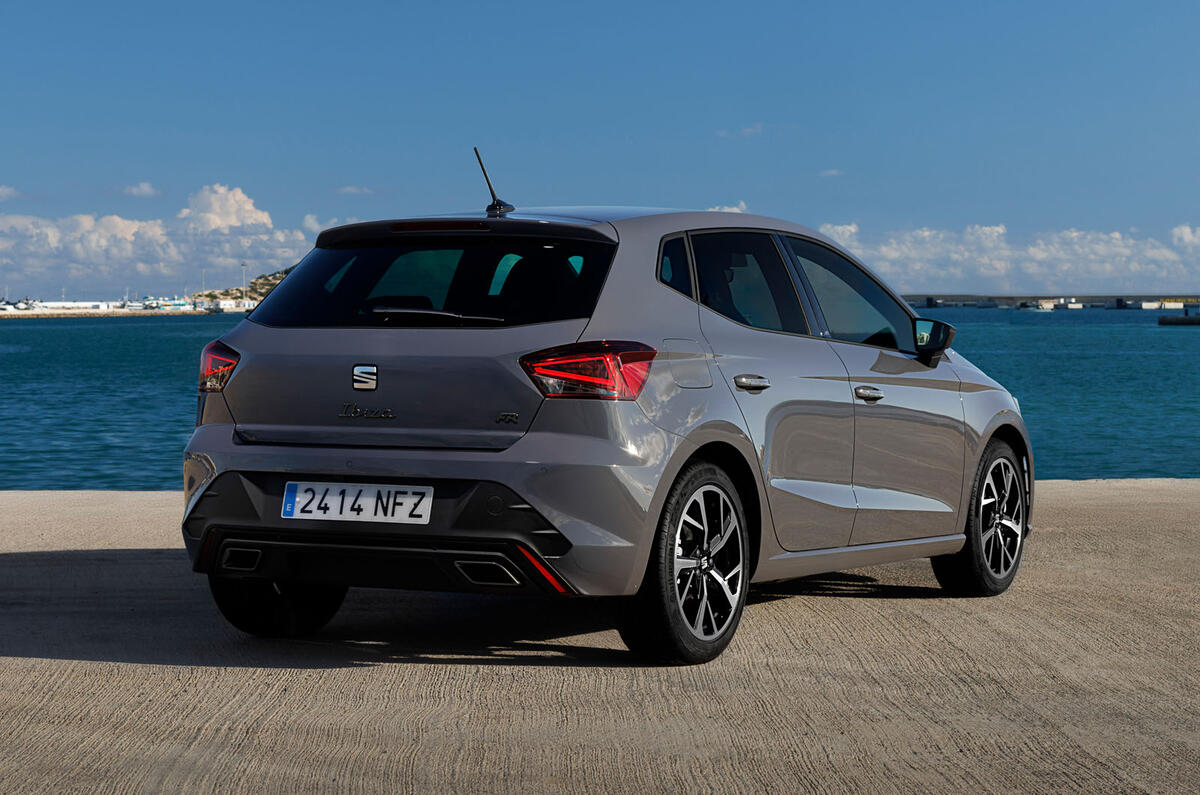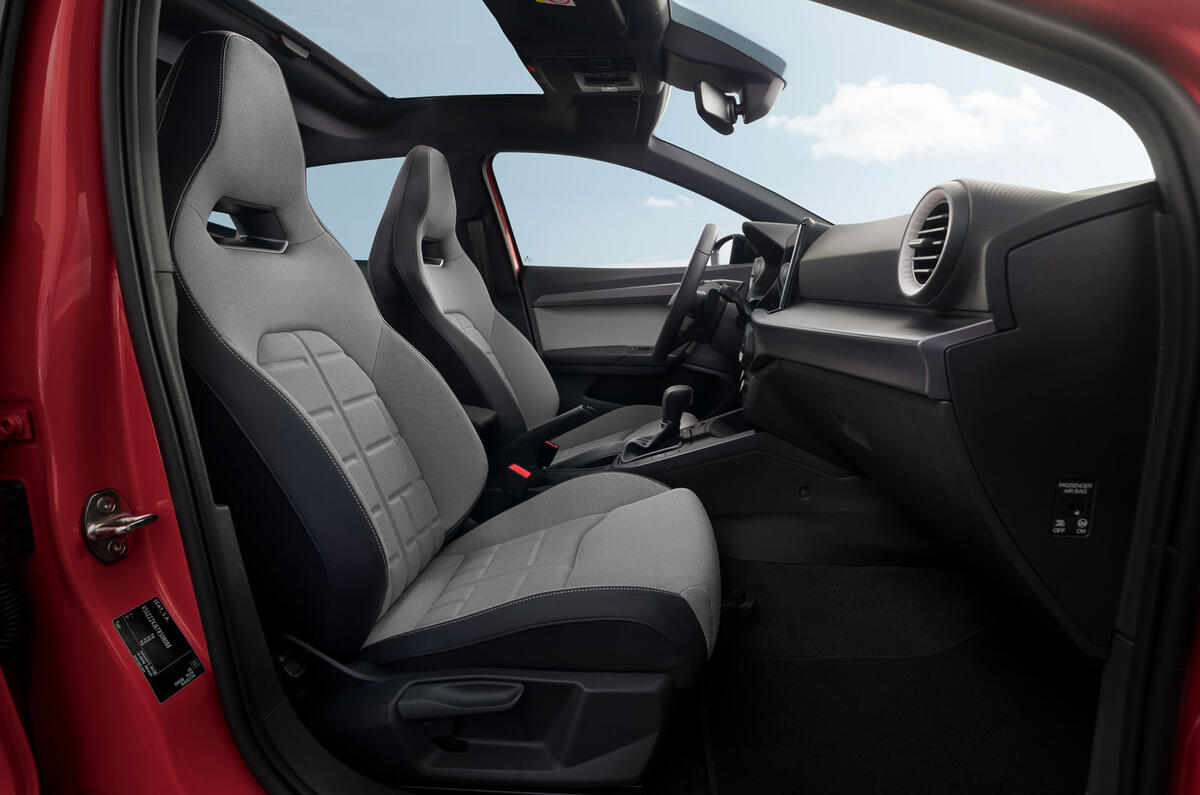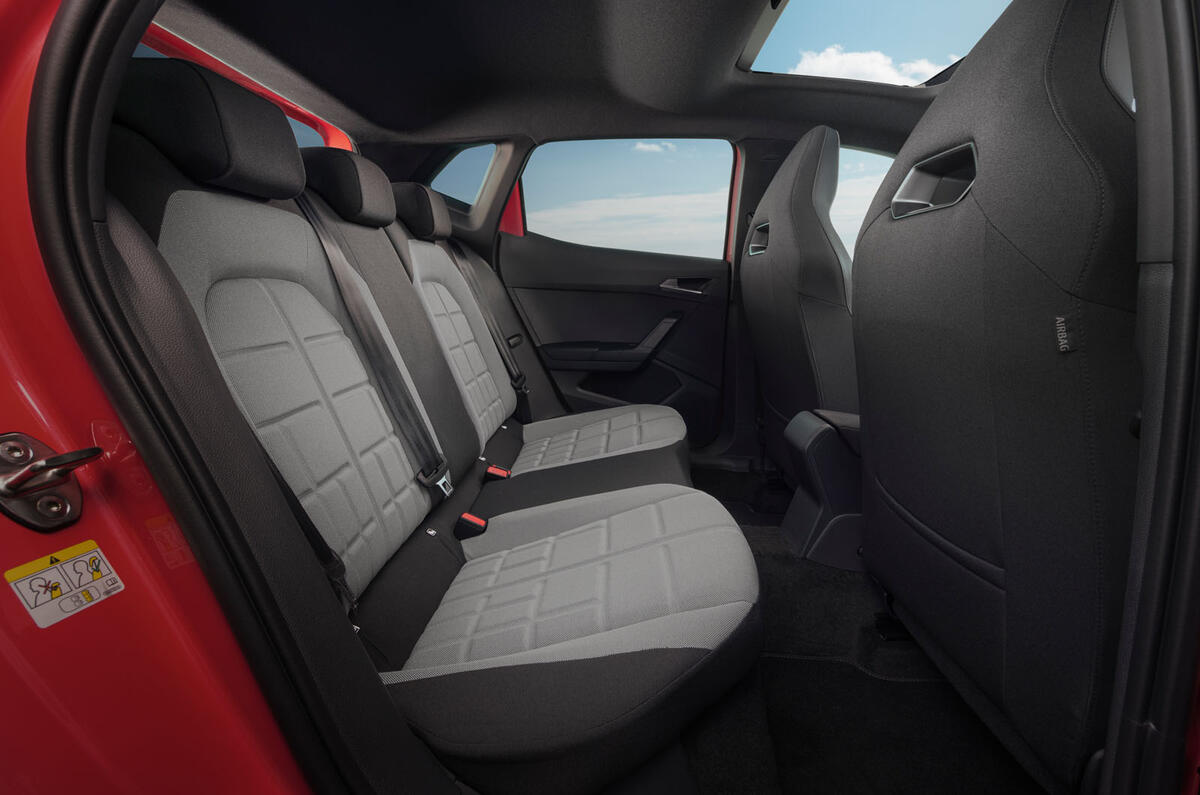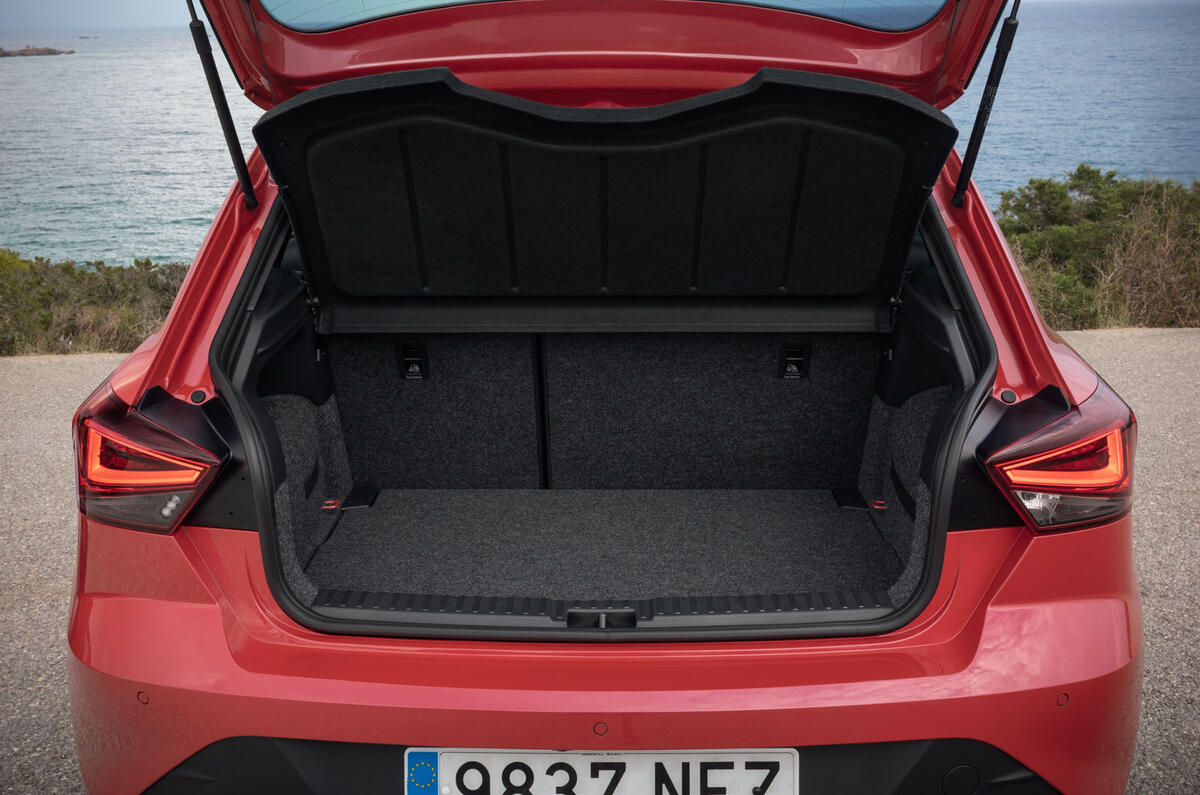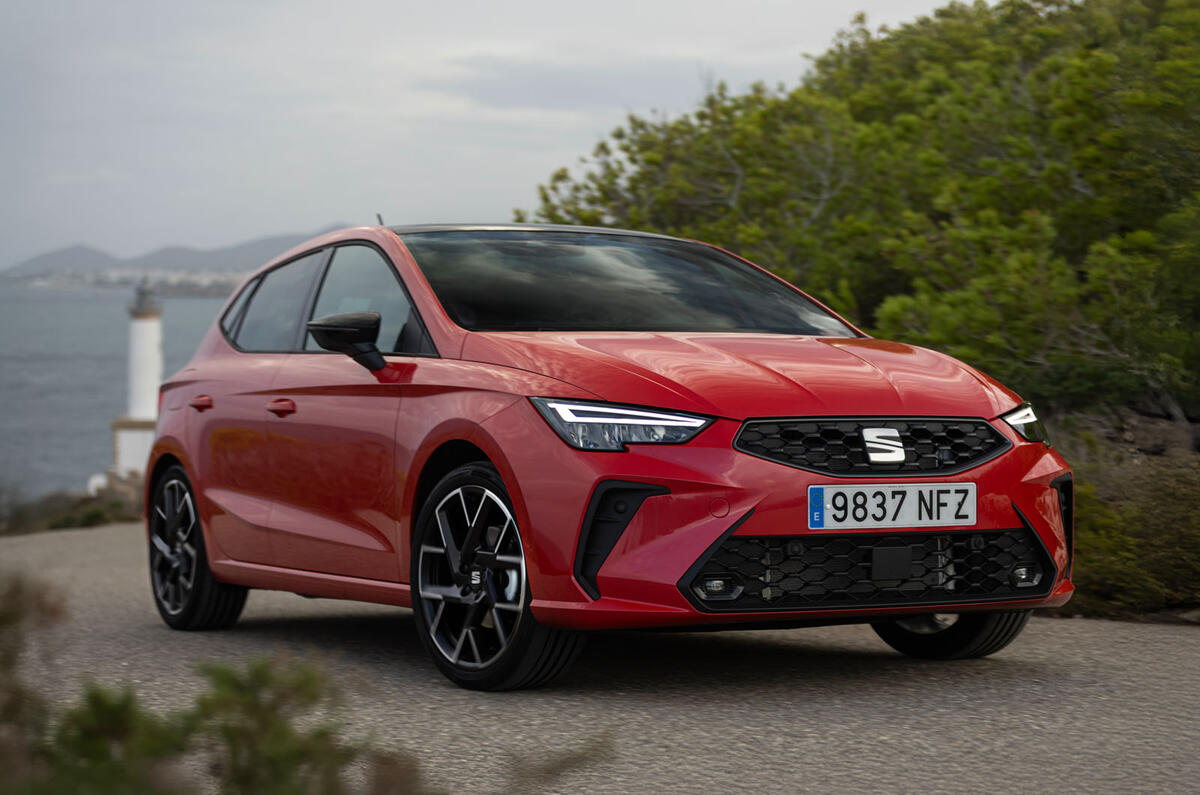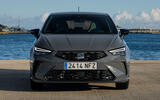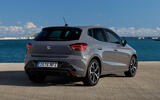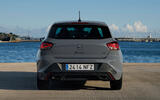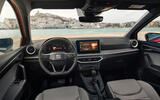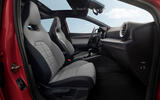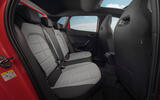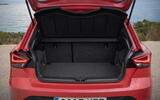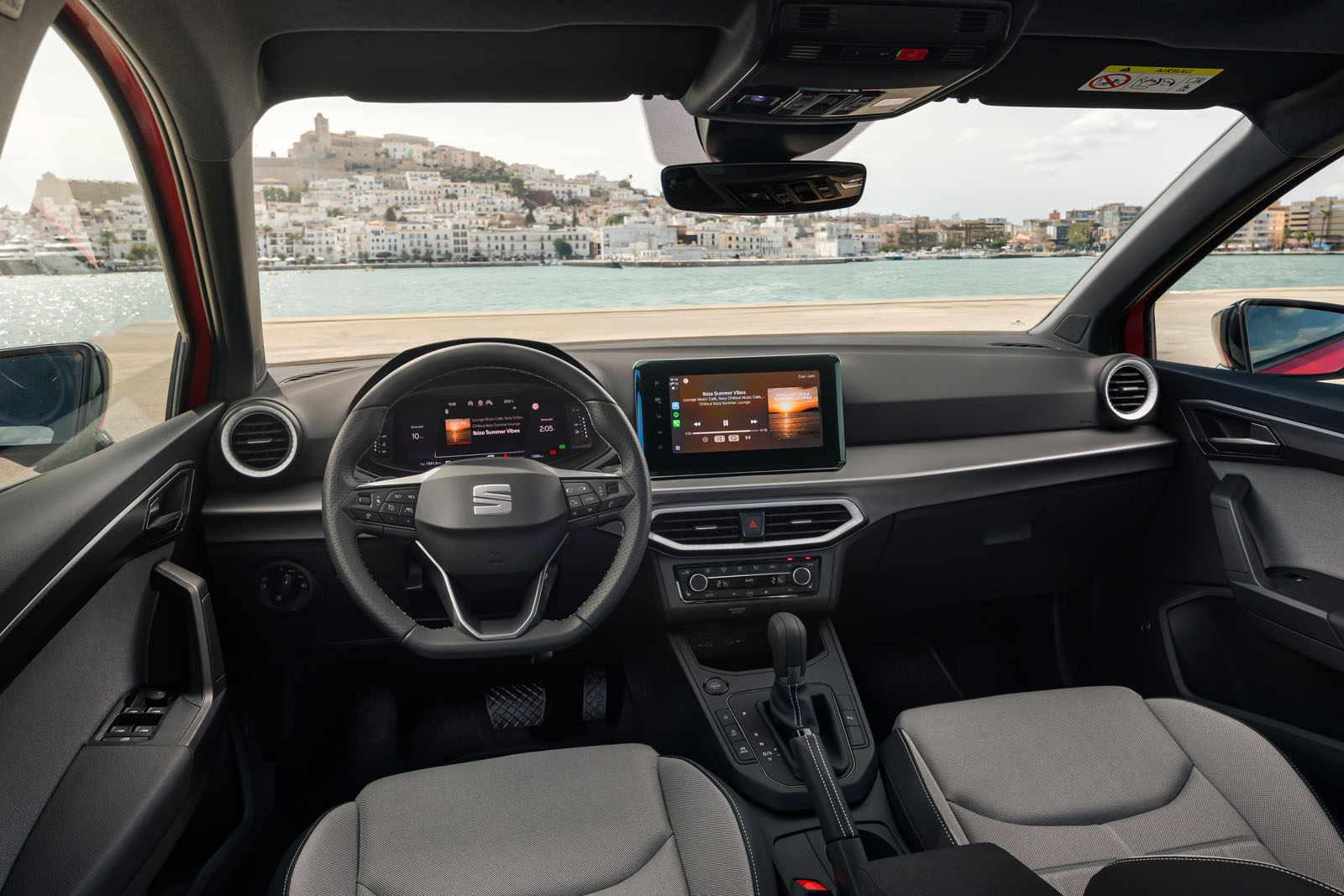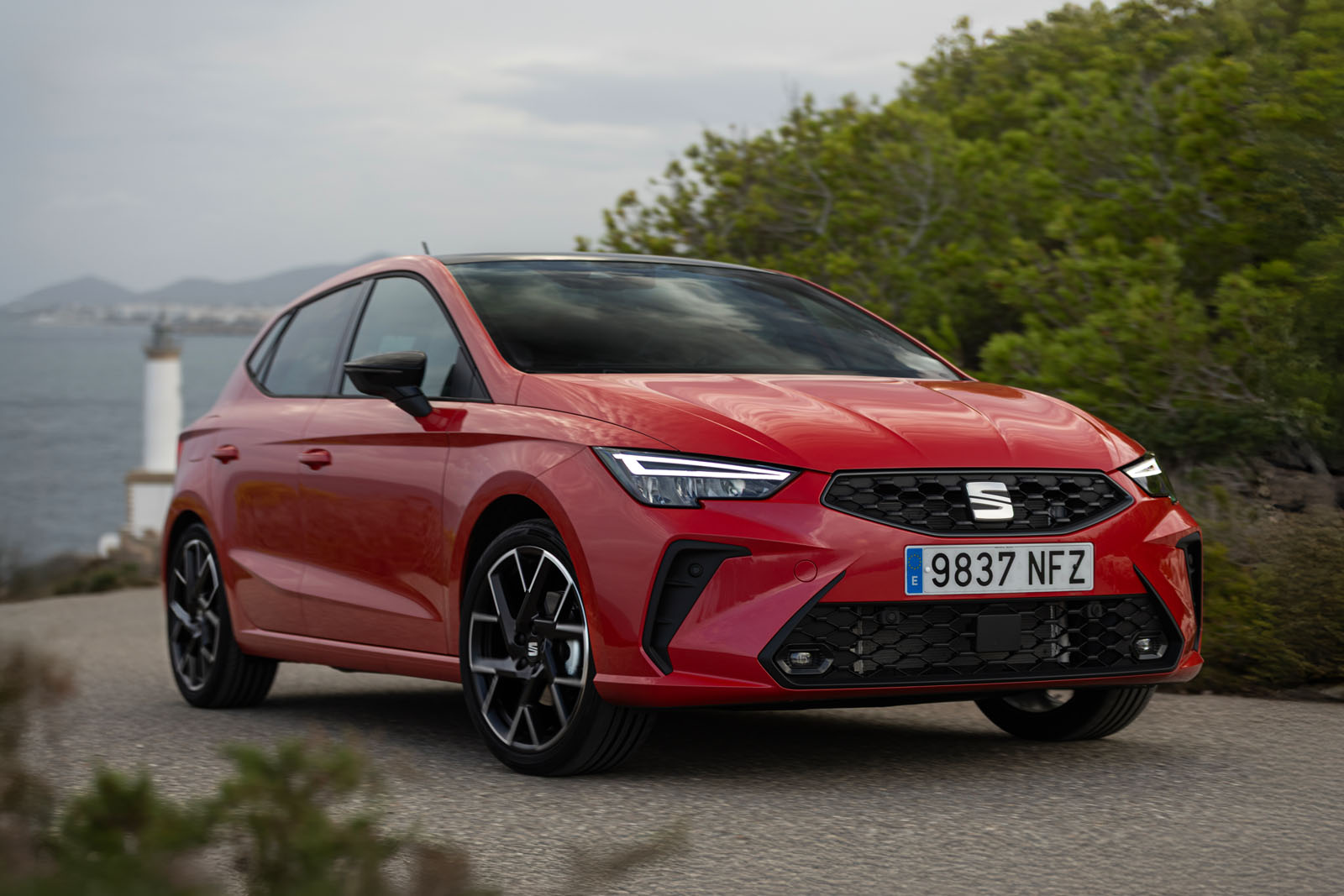Initially, only one engine will be o�ffered in the UK: a 1.0-litre turbo triple. It can be had with 94bhp and a five-speed manual gearbox or 113bhp and either a six-speed manual or a seven-speed dual-clutch automatic gearbox.
It’s a perfectly sufficient combination: torquey and refined at town speeds, with enough grunt to get up to motorway pace within the length of a slip road.
It isn't as charismatic as the three-cylinder powerplant found in the rival Peugeot 208 or Citroën C3, though, lacking those engines' signature growl in favour of lower noise and vibration.
The auto’s upshifts are rapid and well timed to make the most of the narrow torque band, although it takes a moment to kick down under a heavy throttle.
We've yet to try the 94bhp unit or the manual gearboxes after the Ibiza's latest update, but they haven't been altered.
Previous experience with them suggest we should expect them too to feel sufficient, if not quite as brisk at the top-end as the full-fat option.
The five-speed manual is particularly long-geared, capable of hitting the national speed limit in its second ratio.
European buyers are offered a 1.5-litre turbo four-cylinder with 148bhp, but this isn't available in the UK. Our experience with this unit in the Seat Arona crossover suggests it's slightly more refined at normal speeds but markedly louder when pushed hard, and that it doesn't feel significantly punchier in normal driving.
Refreshingly, the ADAS functions aren’t that intrusive in the Ibiza. Even the speed warning buzzer isn’t too annoying, sounding just once when you exceed the detected limit.


